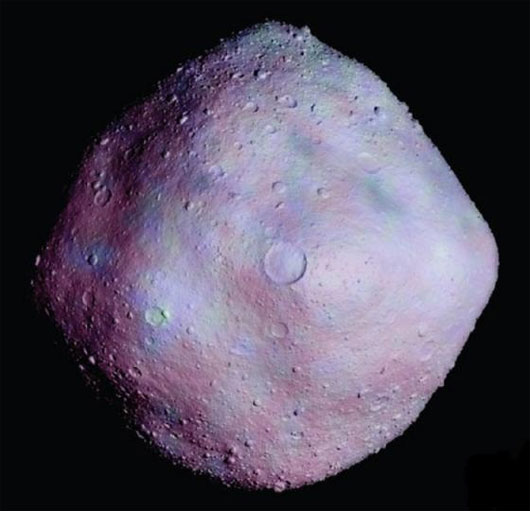Specimen worth 800 million USD
Aeronautics and Space Agency (NASA) is planning to collect specimens from distant asteroids to bring them back to Earth to study.

Therefore, scientists have embarked on designing robotic spacecraft to serve this project. The task of collecting this specimen is estimated to cost 800 million USD. It is expected that the OSIRIS-Rex spaceship for the project will be launched in September 2016 at Cape Canaveral air base in Florida.
In the mission, the OSIRIS-Rex will approach 1999 RQ36 asteroid (nickname Benu) , working for 2 years to survey and map. Finally, use the robotic arm to collect the sample and return to Earth. Scientists are very interested in studying the minerals and chemical composition on asteroids. It is believed in the theory that there were once asteroids with a similar component crashing into the earth, thereby providing the organic materials and water needed for life to form.
Reuteurs news agency quoted the University of Arizona scientist Dante Lauretta as saying that this is a pioneering effort to coordinate science and technology to study distant asteroids. The main contractor for this program is Lockheed Martin Corp presented a comprehensive technical evaluation table to start building spacecraft. In addition, NASA signed a $ 183.5 million contract with United Launch Services for the design of Atlas 5 rocket to launch OSIRIS-Rex into space.
- WB buys China 's gas emission limit worth 930 million USD
- Detection of 180 million year old sea monster fossils
- USD 4 million for a bag containing moon land
- Alcatel-Lucent and VNPT signed contracts worth US $ 60 million
- Discover $ 50 million treasure on shipwrecks in the Atlantic
- Strange eggs in the belly of a pig are worth a million dollars
- The Kyoto Prize worth $ 1.8 million was divided into three
- The big sea monster never seen
- Discovering treasures of more than 150 million USD on shipwrecks
- Bonus money if chip errors are designed by Vietnam
- Discovered a $ 5.3 million meteorite in the field
- Bill Gates contributed money to build the observatory
 Van Allen's belt and evidence that the Apollo 11 mission to the Moon was myth
Van Allen's belt and evidence that the Apollo 11 mission to the Moon was myth The levels of civilization in the universe (Kardashev scale)
The levels of civilization in the universe (Kardashev scale) Today Mars, the sun and the Earth are aligned
Today Mars, the sun and the Earth are aligned The Amazon owner announced a secret plan to build a space base for thousands of people
The Amazon owner announced a secret plan to build a space base for thousands of people